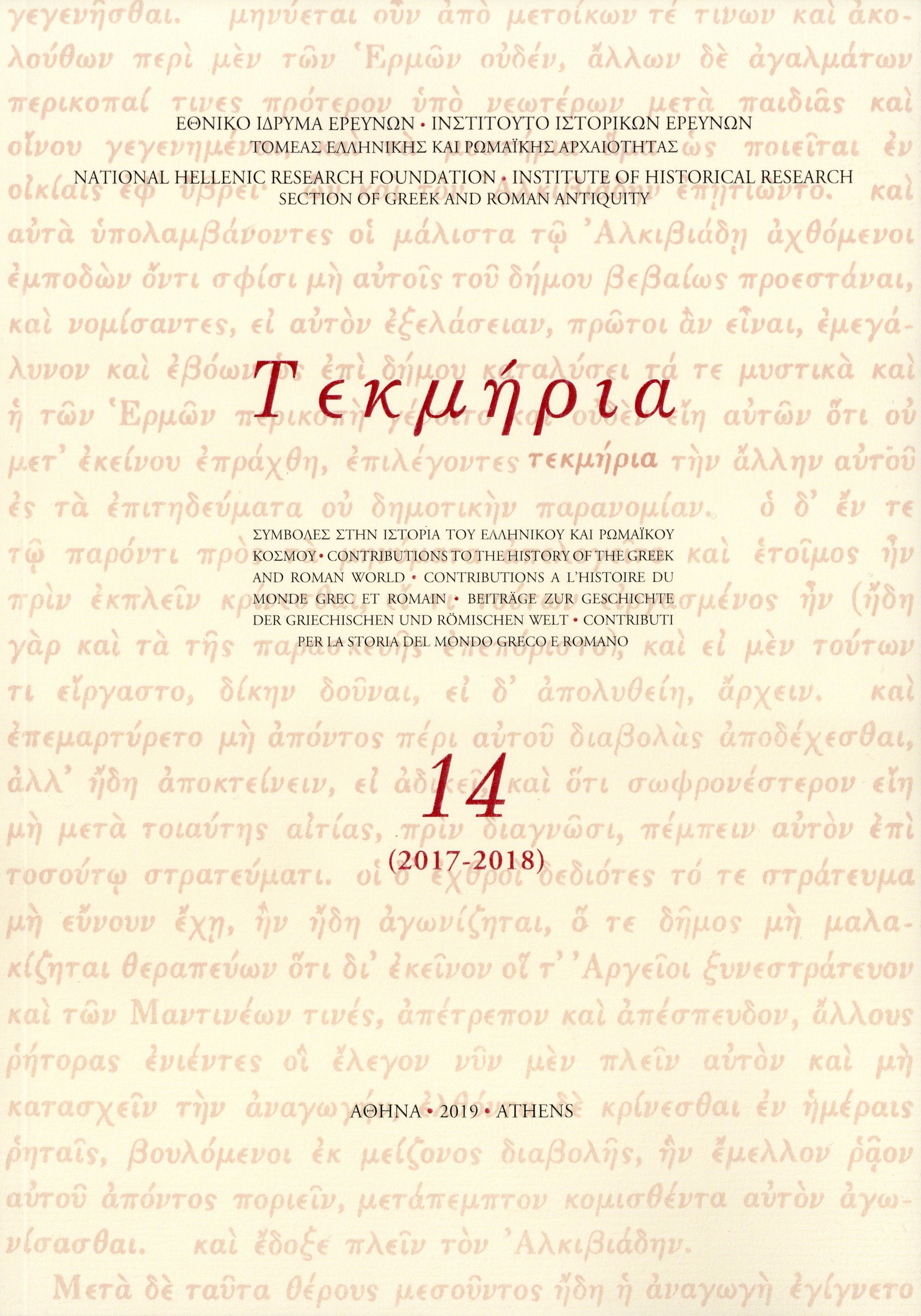Notes on a Gladiatorial Inscription from Plotinopolis
Abstract
The paper is concerned with a new gladiatorial tombstone from Plotinopolis. The paper raises serious doubts on the text of the inscription offered by itsinitial editor (Tsoka 2015); it also pinpoints towards Sharankov’s proposal(Année Épigraphique 2014 [2017] no. 1165, 493) as the only viable solution forthe text of the inscription, citing also unnoticed parallel passages from ancientGreek inscriptions and texts as evidence substantiating the new reading of the stone (see nn. 7-9). The paper expresses also disagreement over Tsoka’s assertion that thewords λοῦδοι and Μάτερνος of the inscription are mere transcriptions into Greek letters of the Latin words ludi, Maternus – and that the name Μάτερνοςimplies Romanisation. It is argued that the Latin-derived name of a gladiator ghting in the Eastern (Greek-speaking) side of the Roman Empire is not a safe marker of Romanisation. This is demonstrated by the epigraphical evidenceattesting to the habit of Greek-speaking gladiators to adopt professionalpseudonyms, many of them (25% of all recorded cases) Latin-derived ones; thepaper argues that the name Μάτερνος is simply a Latin-derived gladiatorialpseudonym. Plutarch’s testimony further substantiates that gladiators could be ethnic Greeks or culture-Greeks (see n. 20). As far as the word λοῦδοι is concerned, the poetic declination of the word in the stone attests to the laststages in the adaptation of a Latin-derived word into a fundamentally Greek linguistic environment. The paper argues that the Latin-derived vocabulary ofthe stone (Μάτερνος, λοῦδοι) should be viewed as a further piece of evidenceattesting to the recognition on the part of the Greek-speakers of the time, that gladiation was a fundamentally Roman cultural institution, a cultural import whose onomastics and terminology could rather remain untranslated.
Article Details
- How to Cite
-
Papanikolaou, D. (2019). Notes on a Gladiatorial Inscription from Plotinopolis. Tekmeria, 14, 203–213. https://doi.org/10.12681/tekmeria.20419
- Issue
- Vol. 14: (2017-2018)
- Section
- Articles

This work is licensed under a Creative Commons Attribution-NonCommercial-ShareAlike 4.0 International License.
Copyright
The copyright for articles in this journal is retained by the author(s), with first publication rights granted to the journal. Authors who submit articles to this journal confirm that third-party intellectual property rights are not violated in any way. By virtue of their appearance in this open access journal, articles can be used freely, with proper attribution, for educational and other non-commercial purposes. The National Hellenic Research Foundation retains the right to publish papers that appear in ΤΕΚΜΗΡΙΑ in any form, including electronic, the journal may assume in the future. It also retains the right to deposit articles published in ΤΕΚΜΗΡΙΑ in its institutional repository.
Sample attribution: Author, article title, first published in ΤΕΚΜΗΡΙΑ, Vol. No., Year, Pages.



